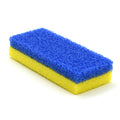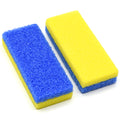Is Acetone Nail Polish Remover Harmful To Nails? A Complete Guide

Nail polish removers are essential products for easily removing nail polish color. The most common type contains acetone, a harsh solvent excellent at breaking down nail lacquer. However, many people question whether regularly using pure acetone formulas damages the nail plate or cuticles over time. This article explores the impacts of acetone nail polish removers on nail health, along with tips for safe usage and alternative options.
How Does Acetone Nail Polish Remover Work?
Acetone works by dissolving the pigments and binding chemicals in polishes. It breaks down the lacquer quickly without rubbing or scraping the nails. Many removers also contain emollients like oils or shea butter to counter the drying effects. Formulas range from 100 percent pure acetone to diluted versions containing 50 percent acetone or less. The higher the amount of acetone, the faster it removes color.
Effects on Nails and Skills
Using acetone removers too frequently or improperly can lead to dry, brittle nails over time for some people. The solvent strips natural oils, especially around the cuticles and tips. Dehydration causes the nail plate to lose elasticity, making it prone to snapping or peeling. However, occasional usage poses little long-term risk for most individuals if nails are rehydrated afterward. Limit effects further by using removers containing less concentrated acetone levels.
The biggest problem arises when pure acetone directly contacts the skin. Many people experience dry cuticles or cracked skin if not washed off promptly. Diligent moisturizing is vital to combat dehydration. Additionally, some chemical nail polishes require pure acetone to avoid staining during removal. To minimize cuticle contact time, users need to use this product cautiously.
Wise Usage Tips
- Opt for an acetone concentration suitable for your nail polish type
- Apply remover directly to cotton pads, not on nails
- Soak pads and press onto each nail for 10-20 seconds until the polish dissolves
- Buff nails first to avoid scraping cuticles while rubbing
- Rinse nails thoroughly after removing old lacquer
- Apply cuticle oil, moisturizing cream, or vitamin E oil after using
- Allow nails to “breathe” instead of immediately re-polishing
Carefully following usage guidelines reduces the risks of nail or skin damage from acetone removers. It also helps combat dryness by ensuring thorough rinsing and deep hydration.
Gentler Acetone-Free Alternatives
Many people prefer substituting gentler nail polish removers without acetone:
1. Nail Polish Removing Wipes
Pre-soaked pads avoid direct contact with pure acetone. No rinsing is required.
2. Acetone-free Nail Polish Removers
Use glycerin, citrus oils, or amyl acetate instead of acetone solvents. Requires more rubbing than acetone.
3. Pure Oil Formulas
Olive, coconut, and almond oils remove polish. Take more effort than acetone.
4. Non-acetone Bottle Removers
Contain alternative solvents like ethyl acetate or methyl coyote. It is very mild but requires presoaking nails.
5. DIY Homemade Recipes
Making your own from oils, salt, and other household ingredients lets you control the formula's gentleness.
Switching to an acetone-free nail polish remover or DIY version is advisable if you experience redness, peeling, or increased brittleness from acetone usage. These alternatives still thoroughly remove lacquer without dehydrating nails and cuticles. However, pure acetone works best for glitter polishes or permanent, long-lasting formulas.
Frequently Asked Questions
Does acetone damage nails?
Using 100% pure acetone too often can dry nails by stripping oils. However, if nails are rehydrated after removing polish, occasional usage or diluted formulas of 100% pure acetone will have minimal effects for most people.
Is acetone harmful to the skin?
Acetone can dry and irritate skin, especially cuticles, if left on too long. Limit skin contact time and thoroughly rinse hands after use. Applying a moisture cream prevents cracking or redness.
What ingredients damage nails?
Frequent use of abrasive glitter polishes, formaldehyde in nail hardeners, and acrylic/gel manicure damage are the top causes of nail issues - more so than remover ingredients.
Does non-acetone remover work as well?
Acetone-free removers are gentler but require 10-20 minutes of soaking compared to 30 seconds with acetone. They remove most polish types but struggle with glitter and permanent colors.
The Takeaway
Using pure acetone or high-concentration nail polish removers too frequently can potentially dry nails and skin over time. However, following careful usage guidelines and hydrating adequately after use reduces the risks for most people. Switching to gentler acetone-free options works well if increased brittleness or discomfort occurs. In the end, safely removing polish without scraping cuticles matters more than how it gets removed. Pay attention to your body’s signals and adjust products as needed. You can easily achieve healthy, polished nails with either type of remover. Shop now and explore your creativity with nail polishes and accessories from Nail Capital USA. Explore our collection and find the perfect shade to match your unique style. Take your manicure game today!
Sample Block Quote
Nam tempus turpis at metus scelerisque placerat nulla deumantos sollicitudin delos felis. Pellentesque diam dolor an elementum et lobortis at mollis ut risus. Curabitur semper sagittis mino de condimentum.












